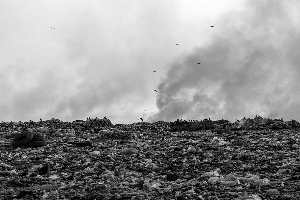Research has proven over the years that the Agbogbloshie toxic area that is notorious for toxic electronic e-waste has caused respiratory illnesses, and people have lived with it over the years, according to Julius Fobil, a professor at the University of Ghana’s School of Public Health.
He carried out a study of the health of e-waste recyclers between 2016 and 2018.
According to a UN report published year by year, around 50 million tons of electronic waste, or e-waste, are being thrown away each year. That figure is projected to double by 2050. At the same time, only 20 percent of e-waste is thought to be recycled appropriately. The rest “ends up in landfills or is disposed of by informal workers in poor conditions,” according to findings by the UN.
There are skin diseases and ailments [at Agbogbloshie], but the worst problem here is respiratory illnesses because the amount of pollution here is so high,” said Julius Fobil, a professor at the University of Ghana’s School of Public Health.
As Ghana joins the rest of the world to get access to modern electronic devices, its appetite for electronics keeps growing. Preventing the illegal dumping of electronic waste and the devastating impact it has on places like Agbogbloshie will prove an even greater challenge if we seriously address health issues.
Ghana now imports about 250,000 tons of secondhand electronics a year, according to a 2011 study coordinated under the Basel Convention, an international treaty that since 1989 has forbidden developed nations from carrying out unauthorized dumping of e-waste in less developed countries.
Opinions of Friday, 12 April 2024
Columnist: Frank Owusu Obimpeh







![NPP Flagbearer, Dr. Mahamudu Bawumia [L] and NDC Flagbearer John Mahama NPP Flagbearer, Dr. Mahamudu Bawumia [L] and NDC Flagbearer John Mahama](https://cdn.ghanaweb.com/imagelib/pics/869/86902869.295.jpg)











